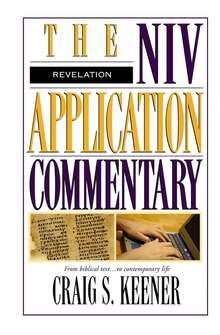In an article published last week on theLAB, COVID-19 and The Mark of the Beast, I claimed that the mark of the beast (666) is most likely not a physical or visible mark (Rev. 13:16). The biggest objection I received from readers had to do with this very point: how could the mark be non-physical and invisible if having the mark was what allowed people to “buy or sell” things (Rev. 13:17)? Wouldn’t the mark need to be visible in order to do that? Furthermore, isn’t there enough evidence that the vaccine is the “number” of the beast, including a bill currently before the House of Representatives (6666) and the very letters “C-O-R-O-N-A” themselves?1 These are good questions, and I think a response would be helpful. But first, we need to start from square one and do some background work.
Letter to the Churches
First, we must remember that Revelation is a first-century letter to seven churches in Asia Minor (Rev. 1:4, 11). Letters in antiquity are much like modern letters—situational, personal, and contextual. To understand a letter between two people (or groups of people), you really need to know a thing or two about what necessitated the sending of the letter in the first place. In other words, you need context. In order to rightly interpret the letter of Revelation, we need to investigate these churches’ historical situation.
Many evangelicals tend to skip over this step and jump straight to application. This is a grave mistake. If we completely detach our modern-day applications from a text’s original, historical context, we risk misapplying the text—sometimes in embarrassing ways. Revelation 13:17 (“no one can buy or sell unless he has the mark, that is, the name of the beast or the number of its name,” ESV) is one such text. In order to interpret it rightly, we need to know its context. We need some historical data from the letter’s time period in order to gain clarity into its meaning. Is there any such data that might shed some light on this passage? As it turns out, there is.
Worshiping the Emperor
If you want to reconstruct the historical context of Christian people living in first-century Asia Minor, you must take into account the Roman imperial cult. There’s simply no way around it. The cult itself presented clear challenges to early Christians. But what do I mean by “imperial cult”?
For starters, Roman emperors were often deified after they died, becoming “gods” for Roman citizens to worship. For example, after Julius Caesar died, he was deified. His adopted son, Augustus, took for himself the title “son of god.”2 The logic was simple. If his father became “god,” then he got to be called, well, you guessed it: “son of god.”

Though it was true an emperor would be deified after he died, many Greeks living in various cities throughout the eastern parts of the empire jumped the gun; they would worship the Roman emperor while he was still alive.3 It is interesting to note that this was true of Ephesus (just like the letter to the Ephesians).4 The city of Pergamum, too, had long been a hotbed for imperial worship.5 Smyrna needs to be thrown into the mix as well.6 The list goes on. In fact, this was also true of the other four cities to which John directed his letter.7
The more despotic emperors of the first century sought to be recognized as gods while they were still living. Nero was one such emperor; Domitian was another.8 Suetonius, the well-known ancient historian, says Domitian demanded to be addressed as both “Lord and God” (Suetonius, Dom. 13). The situation was such that Domitian was “everywhere hated and feared” (Dom. 14).
Keep in mind that most scholars believe Revelation was written during the reign of one of these two tyrants. Either way, if you were a Christian, you very well might have been plagued with angst, fear, and uncertainty. After all, Nero was infamous for murdering his own mother, as well as killing innocent Christians by turning them into tar-covered human candles to light up the night. Suetonius tells a story of how Domitian once wined and dined his palace steward, lavishing on him kindness and generosity. Then the next day Domitian had him crucified. Why? Simply because he could (Dom. 11).
It is perhaps understandable, then, why other ancient texts came to refer to Nero and Domitian as a “beast.” This is documented in places like Pliny’s Panegyricus, the Sybilline Oracles, and Vita Apollonii.9 I’d say the shoe fits.
“666”: The Number of the Beast
Years ago, I remember hearing how some had taken President Reagan to be the end times “beast.” The reasoning went like this. When you take his full name, Ronald Wilson Reagan, you can see how each name contains exactly six letters. No wave of the wand or hat-trick was needed to see how that dreaded, mysterious number was embedded in the president’s name. To say this is silly is an understatement. (How odd that John wrote in such a way that only a person who was familiar with both the English language and modern American politics could rightly interpret his message!) In order to avoid embarrassing interpretations like this one (and similar ones that seem to prevail in 2020), we must deal with the text’s original context. Again, you can’t simply jump to modern application without dealing with the historical context.
Scholars often associate “the number of the beast” with Nero Caesar. There’s actually good reason for doing so. For instance, we know from Suetonius that many people were at the time toying with the numerical values of Nero’s name (Nero 39). This practice, known as gematria, took a letter of the alphabet and assigned it an equivalent number. So, for example, in the case of Greek, the first letter alpha would be given the number one. The second letter beta would be understood as two, and so on. When you take Nero’s name (Neron Kaisar) and transliterate it into Hebrew, the result is the number of the beast: 666.10
Explore Resources on Revelation
The Book of Revelation (The New International Greek Testament Commentary | NIGTC)
Regular price: $64.99
The Book of Revelation (The New International Commentary on the New Testament | NICNT)
Regular price: $42.99
Revelation (Baker Exegetical Commentary on the New Testament | BECNT)
Regular price: $59.99
The Image of the Beast
Recall that in Revelation “the mark of the beast” is tied closely to the worship of the beast’s image (Rev. 13:15; 20:4). Since we have a pretty good idea about the identity of the beast, is there any other historical data we could look to that would link the worship of the beast’s image with the worship of Caesar’s image? Again, the answer is yes. From the writings of Pliny, for example, we learn how professing Christians’ faith were put to the test by having them worship the image of Caesar (Pliny, Letters, 10:96-97).11
The emperor’s image was everywhere, especially on coins. Modern folks are used to this. In my country, images of former national leaders are on our money. But Rome was slightly different. Caesar’s image would be on coins along with his claim to divinity. Quite literally, the emperor’s boast that he was in some way “divine” was etched (dare I say marked?) on money, decrees, and the like. One scholar observes that, “One could do little in commerce . . . without handling such a ‘mark,’ because allusions to the emperor’s divinity appeared on many coins and even shipping bills and other documents.”12 During this time period, involvement in local economies would have often required some sort of participation in pagan worship. For example, trade guilds often had feasts that centered around the worship of idols. If you were part of the guild, then your participation in these feasts would have been compulsory—that is, only if you wanted to be able to buy and sell.13
Buying and Selling
What, then, can we conclude about that “buy/sell passage”? When it comes to the beast, his mark, and the worship of the beast’s image, the historical data seems to be pointing us in one direction: It’s simply a reference to how the imperial cult impacted one’s participation in the local economy. If the “mark” is an allusion to the emperor’s claim to divinity (symbolized on Roman coins, statues, images, etc.), then a person in the first century could genuinely be said to “take the mark of the beast” by participating in the economy at the expense of their faith in Jesus. That last part is key. In other words, at certain times and in certain locations in the empire, the only way to be a good-standing citizen would have been to simply curse Christ and worship Caesar’s image (see again Pliny, Letters, 10:96-97). Again, this would have been a particular problem for Christians in Asia Minor. They would often find it impossible to make a living and worship Christ exclusively.
Of course, a person could respond by saying, “Yes, but the text says the ‘mark’ is placed on the ‘right hand or the forehead.’ Does this not therefore necessarily imply a physical mark?” The answer is no. Craig Keener offers helpful thoughts on this point. He notes how “the mark of the beast” in Rev. 13 acts as a parallel to the “seal” that is placed on the foreheads of Christians in Rev. 7:3-4. This “seal” actually has an Old Testament basis, namely, in Ezekiel 9, where a “mark” was said to have been placed on the foreheads of God’s people (Ez. 9:1-6). Keener also points to another Jewish text of the period (known as the Psalms of Solomon) that describes a mark placed on evil people. He observes how the two marks in Ezekiel and the Psalms of Solomon are clearly “symbolic . . . visible only to God and his angels, not to people.”14 And so it is quite reasonable to conclude that the mark of the beast, like the seal of the Lamb, is also symbolic.
So is the Vaccine the 666 Mark of the Beast?
Growing up, I never heard any of this stuff. I reckon that most people in my evangelical tradition haven’t either. But without all the background information, people are being tossed to and fro by endless speculations and fears. Sadly, some people—many of them sincere Christians—are terrified that they will be forced to take the mark of the beast (no, it’s not Bill Gates) in the near future. Could it be the vaccine? Is it a computer chip? What if I get tricked into taking it?
With these questions in mind, let me offer a few remarks about modern-day application. First, the historical data does not permit us to think the “mark of the beast” is something you can accidentally take. It’s a mark of loyalty and worship, which requires full cognitive and heart-felt awareness of what you are doing (otherwise it’s not worship). If there is some future mark imposed on people by some nefarious person, then to take that mark, you’ll know exactly what you are doing—namely, cursing Christ and pledging devotion to his enemy. Scripture and other ancient writings from that timeperiod point us in this direction and, quite frankly, there isn’t much leeway on this point (although you can debate me in the comments, if you wish).
Second, be careful and wise with how you apply these texts. Let me give an example. Right now, in my own country (and it’s been this way for a long time), a person might find it very tricky and difficult to operate within our local economies without a government-issued social security number. Let me be as clear as I possibly can about this: There is no biblical reason to think that accepting government-mandated social security numbers is the equivalent of taking the mark of the beast. Whatever the current issue may be (vaccines, SSN, chip implants, SIM cards, etc), we need to be careful about confusing our personal and/or political convictions with the meaning of a biblical text. Some public policy ideas are good; some are terrible. But either way, unless “They” require you to forsake your faith in Jesus as the exclusive object of your worship, They have no relation to the mark of the beast. Again, given what we know about the historical context of these biblical texts, the “mark of the beast” must be tied back into worship if it is to be applied properly.
To take all of these things into account allows a much-needed moratorium on all the pointless anxiety and fear-mongering. The message of Revelation beckons us away from angst and worry. It bids us to gaze upon the slain Lamb—to worship him with loyalty, devotion, and commitment. Let’s make Christ our focus, not endless speculations that, at the end of the day, have very little to do with the message of Revelation.
Further Reading
Be sure to read Dr. Halsted’s earlier article, Covid-19 and the Mark of the Beast.
Explore Resources on Revelation
The Book of Revelation (The New International Greek Testament Commentary | NIGTC)
Regular price: $64.99
The Book of Revelation (The New International Commentary on the New Testament | NICNT)
Regular price: $42.99
Revelation (Baker Exegetical Commentary on the New Testament | BECNT)
Regular price: $59.99
*Correction: An earlier version of this post stated that the Senate had a bill before it, when it should have said the House of Representatives.
- I recently saw somebody construct a numerology from the word “COVID” that goes something like this:
C = 3
O = 15
R = 18
O = 15
N = 14
A = 1
6 66
- Floyd O. Parker, “‘Our Lord and God’ in Rev 4,11: Evidence for the Late Date of Revelation,” Biblica 82, no. 2 (2001): 213–14.
- Craig S. Keener, Revelation (The NIV Application Commentary; Grand Rapids: Zondervan, 2000), 37.
- See again Parker, “‘Our Lord and God,’” 213–14. See also Tae Hun Kim “The Anarthrous Yios Theou in Mark 15,39 and the Roman Imperial Cult.” Biblica 79, no. 2 (1998): 221–241.
- Mark Wilson, “The Early Christians in Ephesus and the Date of Revelation, Again,” Neotestamenica 39, no. 1 (2005): 171.
- Duane Warden, “Imperial Persecution and the Dating of 1 Peter and Revelation,” JETS 34, no. 2 (June 1991): 211.
- Keener, Revelation, 37-38.
- On Nero, see Wilson, “The Early Christians,” 177–78. On Domitian, see Warden, “Imperial Persecution,” 207–8. Even taking into account Warden’s cautions about overplaying Domitian’s claims to divinity with respect to the dating of Revelation, his conclusions are still insightful. See also Keener, Revelation, 37.
- Wilson, “The Early Christians,” 185.
- See how the values work in Wilson, “The Early Christians,” 184. For a helpful introduction to “666,” I recommend Keener, Revelation, 354–56.
- Keener, Revelation, 351.
- Keener, Revelation, 352.
- Keener, Revelation, 353.
- Keener, Revelation, 353.






